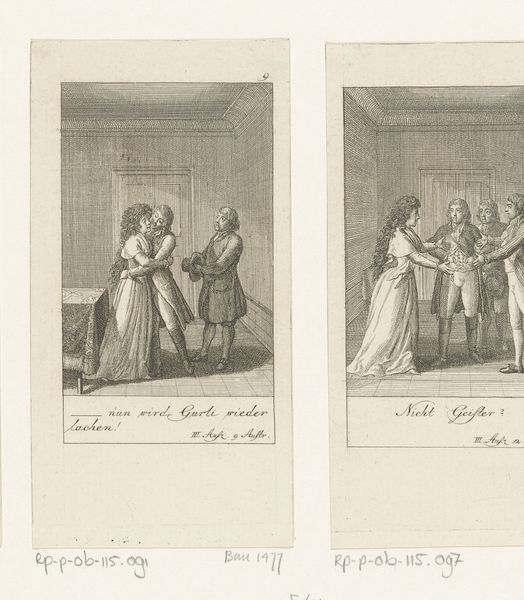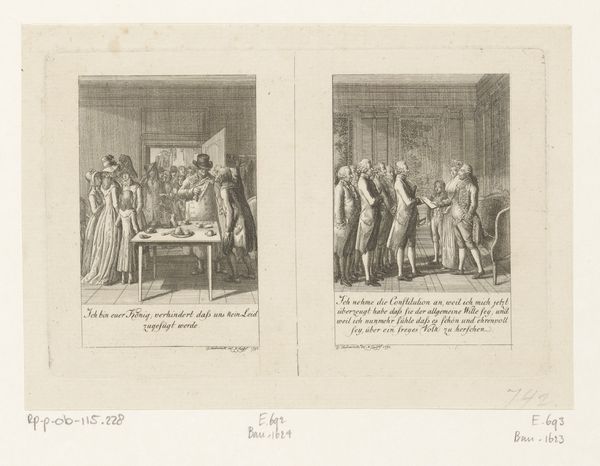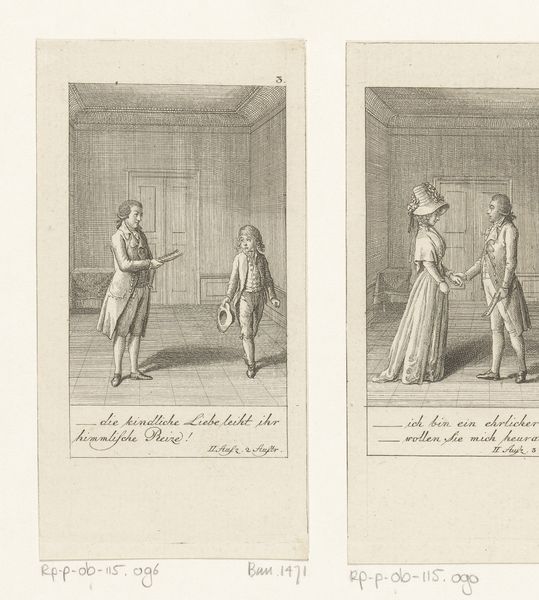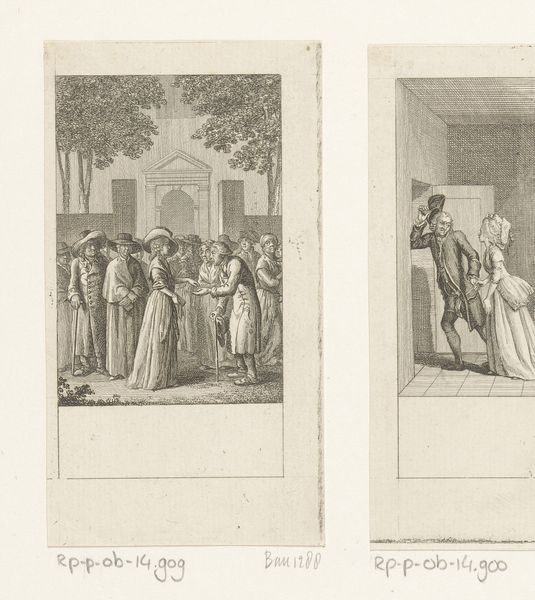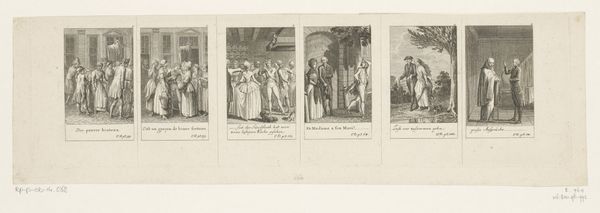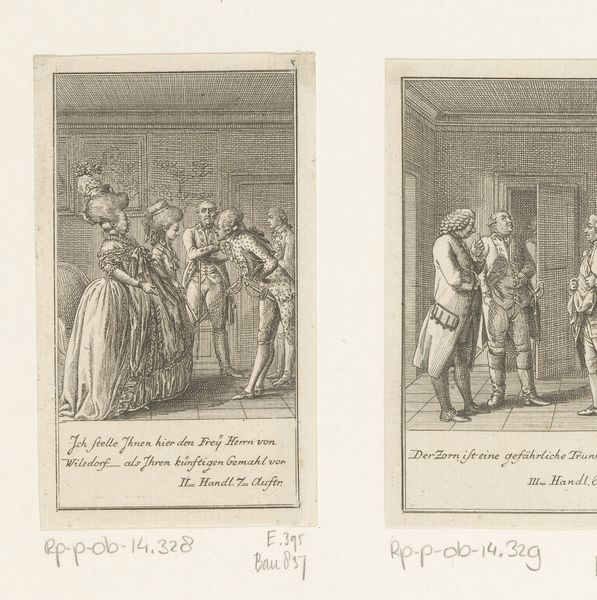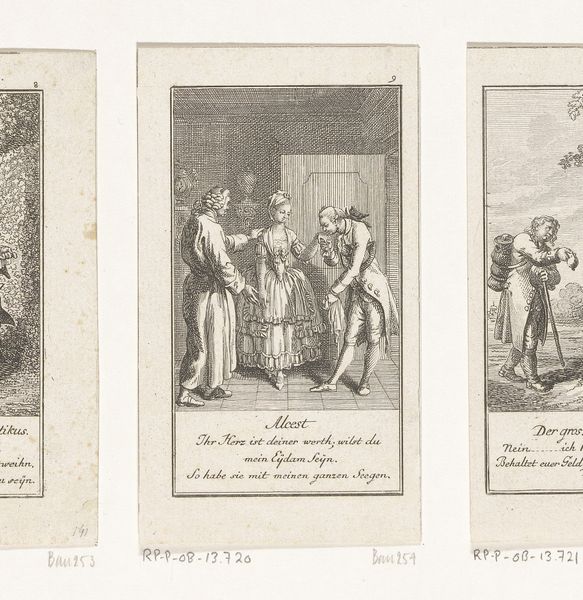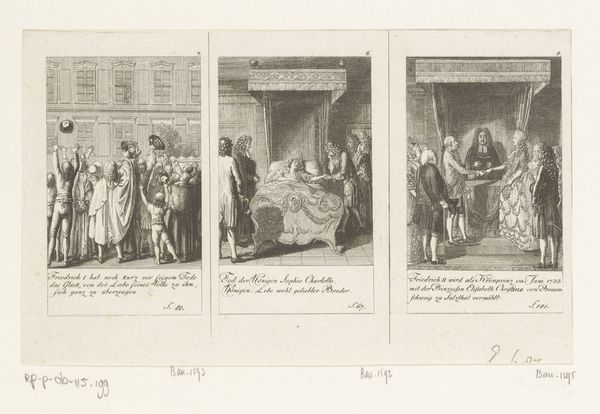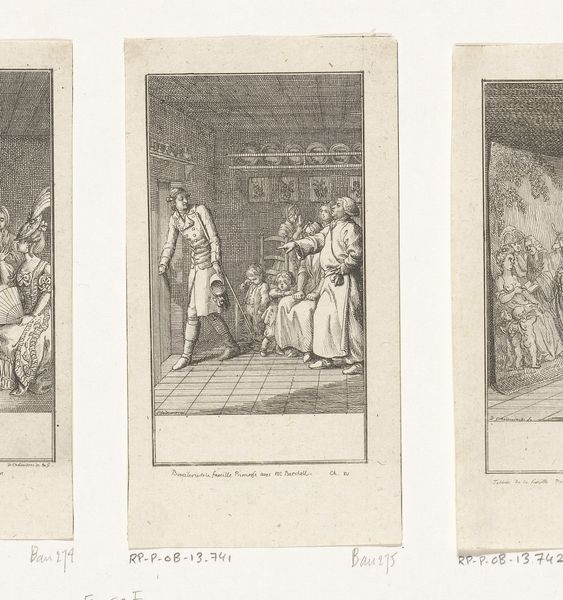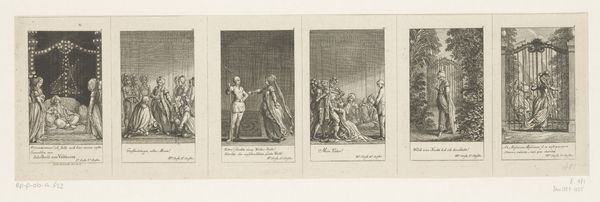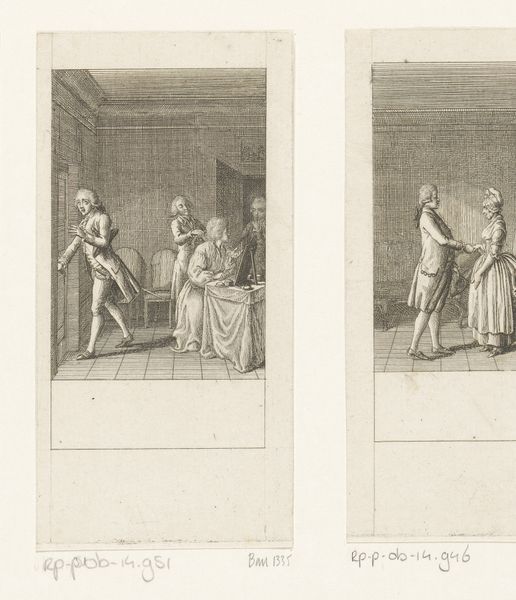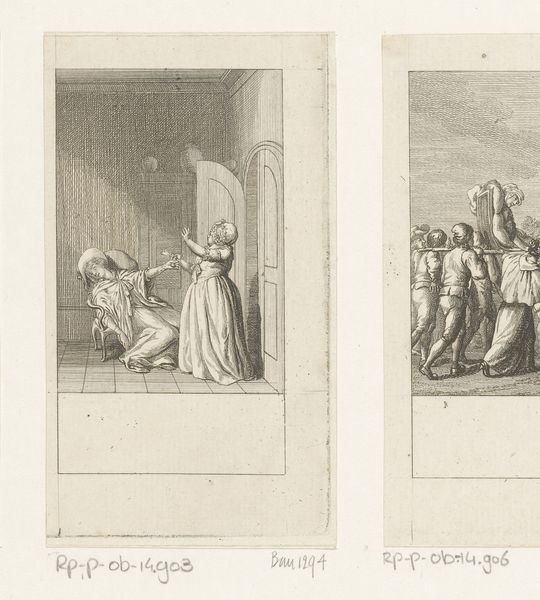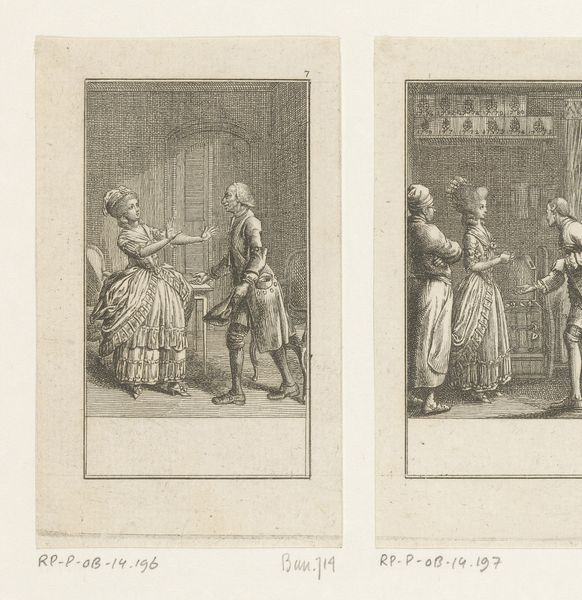
Liddy vertelt Fazir over haar toekomstige huwelijk met Kaberdar 1790
0:00
0:00
danielnikolauschodowiecki
Rijksmuseum
drawing, paper, pen
#
portrait
#
drawing
#
narrative-art
#
figuration
#
paper
#
romanticism
#
line
#
pen
#
genre-painting
#
history-painting
#
realism
Dimensions: height 118 mm, width 65 mm
Copyright: Rijks Museum: Open Domain
Editor: This drawing by Daniel Chodowiecki, made around 1790, is titled "Liddy vertelt Fazir over haar toekomstige huwelijk met Kaberdar." It's a pen drawing on paper, and what strikes me immediately is its intimate, almost theatrical feel. What do you see in this piece, considering the time it was created? Curator: It's a fascinating piece of social commentary, isn't it? Chodowiecki was very interested in portraying everyday life and manners, reflecting the Enlightenment's focus on reason and social progress. Drawings like these were often reproduced as prints, making them accessible to a wider public. This allowed for the dissemination of ideas about ideal domestic arrangements, familial roles and polite behavior, which were crucial to building a "civilized" society. Does that shift your view on it? Editor: It does. So it’s less a personal story and more a statement about societal expectations of the time? Curator: Precisely! Consider the staging: the interior setting, the costumes. Everything points to a constructed reality intended to instruct as much as to entertain. Who would see such a work, and how do you think it influenced them? Editor: I imagine this would appeal to the rising middle class, eager to learn about etiquette and proper social conduct. Perhaps they saw themselves reflected, or aspired to the lifestyle depicted. It’s interesting how art functions not just as decoration, but as a tool for social mobility and cultural refinement. Curator: Exactly! And, importantly, who controls that narrative? Who gets to define ‘refinement’? Think about the political power embedded within apparently simple genre scenes like this one. Editor: I never thought about it like that before! I came into this thinking about personal relationships and emotions. Now, I am walking away considering the power structures inherent in art meant for public consumption and discourse! Thank you for enlightening me about this drawing’s historical function.
Comments
No comments
Be the first to comment and join the conversation on the ultimate creative platform.
